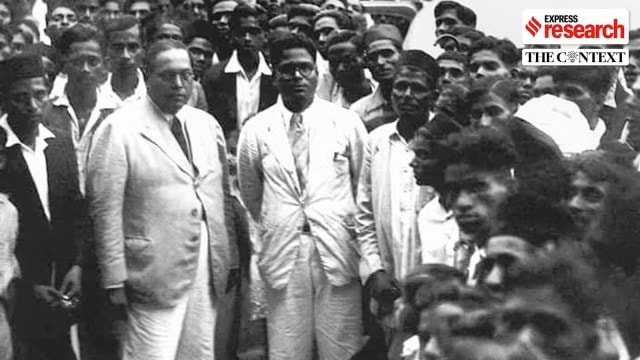This week, a letter from Anita Augustine, the grieving mother of 26-year-old Anna Sebastian Perayil, an Ernst & Young employee who recently died due to alleged work pressure, captured national attention.
Perayil’s death, which followed complaints of chest constriction, prompted Augustine to reach out to the chairperson of Ernst & Young, revealing how her daughter had confided “about the overwhelming workload, especially the additional tasks assigned beyond her official duties”.

“I would tell her not to take on such tasks, but the managers were relentless…Anna’s experience sheds light on a work culture that seems to glorify overwork while neglecting the very human beings behind the roles,” Augustine emphasised.
Perayil’s death has sparked an outcry among the nation’s youth, many of whom identify with a demanding work culture that leaves little room for rest and recovery. It calls for a deeper conversation about work culture, drawing parallels to leaders like Dr B R Ambedkar, who championed workers’ rights.
An eight-hour work day, Ambedkar’s legacy
Dr B R Ambedkar, a pivotal figure in India’s labour movement, transformed working conditions for labourers nationwide. He served as the Labour Member of the Viceroy’s Executive Council from July 20, 1942, to June 1946 — a four-year tenure that marked a watershed moment in labour legislation and welfare.
Volume II of Ambedkar Speaks, edited by Indian economist and educationist Narendra Jadhav, lists the 34 speeches Ambedkar delivered as Labour Member. Among these, six address government policy toward labour and five delve into the intricacies of labour legislation. He also presented three insightful speeches on employment exchanges and skill development, three on wages and dearness allowance, and four that championed labour welfare.
Among Ambedkar’s key achievements was the advocacy for an eight-hour work day, which became a cornerstone of his legacy. This change was adopted during the 7th Indian Labour Conference in New Delhi on November 27, 1942, where he emphasised the necessity for humane working conditions.
Story continues below this ad
During his tenure, the Factories Act of 1934 was amended to include provisions for water supply and washing facilities, fire escapes, and regulations regarding working hours, particularly for women and children, among other reforms.
Arguing for it, he said: “I think it will be agreed that apart from other considerations, if one were to take into account only the climatic conditions that prevail in this country, it would be agreed that for that, if for no other reason, the hours of work in a country like India ought to be much less than the hours of work that are prevalent in other countries.”
Revisions to the Indian Mines Act and the Mines Maternity Benefit Act improved benefits and facilities for workers, especially women. Scholar Velusamy Madasamy notes in his paper ‘Dr B R Ambedkar: The Pioneer in the Field of Indian Labour Welfare’ that “it was the establishment of Statutory Welfare Funds and advancements in social insurance for which Dr Ambedkar will be long remembered”.
In his critique of a social economy driven by private enterprise and profit, Ambedkar posed a crucial question: “To whom and for whom is this liberty?” He argued that such liberty often benefits landlords and capitalists, enabling them to raise rents, extend working hours, and lower wages.
Story continues below this ad
He cautioned, “For in an economic system employing armies of workers, producing goods en masse at regular intervals, someone must make rules so that workers will work and the wheels of industry run on. If the State does not do it the private employer will.”
Current labour laws
Since labour matters fall under the Concurrent List, both Parliament and state legislature hold the authority to enact relevant laws. Before the introduction of the New Labour Code, the central government identified over 40 central laws and more than 100 state laws addressing various labour issues.
The Second National Commission on Labour (2002) recommended reforms to consolidate these existing laws into four main labour codes, which are still awaiting implementation: the Code on Wages (2019), the Code on Social Security (2020), the Industrial Relations Code (2020), and the Occupational Safety, Health, and Working Conditions Code (2020).
These new codes prioritise critical aspects such as worker safety, fair wages, and social security. For example, the Occupational Safety, Health, and Working Conditions Code establishes comprehensive health and safety standards for employers.
Story continues below this ad
Amid India’s ongoing industrial transformation, Ambedkar’s words resonate powerfully: “If Indian Labour desires that it should not have to undergo misery, trials and tribulations, and struggles to win its freedom from the despotism of the owning class; Indian Labour must insist that the Indian Constitution must not merely be a political instrument but must also be an economic instrument.”

































